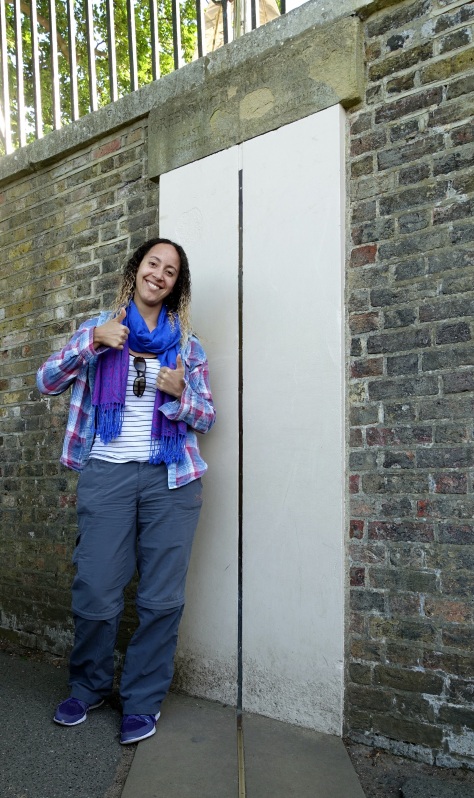Post two and I’ve already hit my first mistake. In transcribing the clues I had noted a mysterious acronym requiring further research: GMTO. Of course it was really GMT and 0° – d’oh! I thought about doing two separate posts but I think they’re related enough that I can put them into one.
0° refers to the Greenwich Meridian, or the Prime Meridian. It divides the Eastern and Western hemispheres, just like the Equator divides the Northern and Southern hemispheres. Imagine a circle round the earth, longways – a meridian is the line of the circle. It’s kind of arbitrary but you can see how a set meridian reference point came to be useful in charting sailing routes and plotting maps. Several meridians were in use throughout most of history – it wasn’t until 1884 that the Greenwich Meridian became universally agreed as 0° longitude.

So, why Greenwich, of all possible locations in the world? The Royal Observatory in Greenwich was set up in 1675 with the primary purpose to improve navigation at sea by determining longitude (one’s exact position east or west) by astronomical means. Of course there were other observatories in the world doing the same thing, but Britain was a huge maritime nation and by 1884, 72% of the world’s commerce depended on sea charts using the Greenwich meridian. So when an international conference was called to decide on one universal prime meridian, it was the obvious choice to cause as little inconvenience as possible. Of 25 nations present at the conference, all voted for Greenwich except San Domingo who voted against, and France and Brazil who abstained. France actually continued to use the Paris meridian until 1914 for navigation, and 1911 for time.
This brings me to the natural link between the prime meridian as a navigation tool, and as a measure of time. The word “meridian” actually comes from the Latin “meridies” meaning “midday”. Theoretically the sun should cross a given meridian halfway between sunrise and sunset. This is what am and pm stand for – ante meridiem and post meridiem. Taking this literally, two places one degree of longitude apart would have a four minute time difference. This obviously became impossible to manage when things like railways came along in the nineteenth century, requiring standardised timetables.
In 1868 New Zealand (then a British colony) set a standardised time for the whole colony, 11.5 hours ahead of GMT. It was perhaps the first country to take this step, and gradually other countries followed suit. By 1880 Greenwich Mean Time was legally adopted throughout Great Britain, but for “wider” countries with huge variations in local time across the land, it was naturally more complicated. The confusion of times in the USA did not come to a definitive end until 1918 with the adoption of the Standard Time Act. The neatest solution to the time problem would of course be based strictly on longitude – the world divided into 24 even strips, each 15 degrees longitude and one hour apart. But since countries and land mass don’t exactly conform to this, instead we have a zigzagged pattern with anomalies such as Iceland being in the same time zone as the UK despite being around 20 degrees to the west.
Just to add to the complication (if you’re still with me!), GMT has not been used as the official time standard since the 1970s. Since the daily rotation of the Earth is irregular and actually slowing down slightly, it was determined that atomic clocks are much more stable in measuring time. So in 1972, Coordinated Universal Time, or UTC, maintained by an ensemble of atomic clocks around the world, replaced GMT as the international civil time standard, although there’s practically no time difference between the two.
Looking back at how recent the history of all this is, who knows what further changes are to come, but for now let’s be grateful that we live in an age where it’s all been worked out for us and the most complicated thing we have to do is google “what’s the time?” when we go on holiday!
This post is part of The London Project series, discovering hidden stories in London based on a Word Map of the city by Angus McArthur and Alison Hardcastle.

